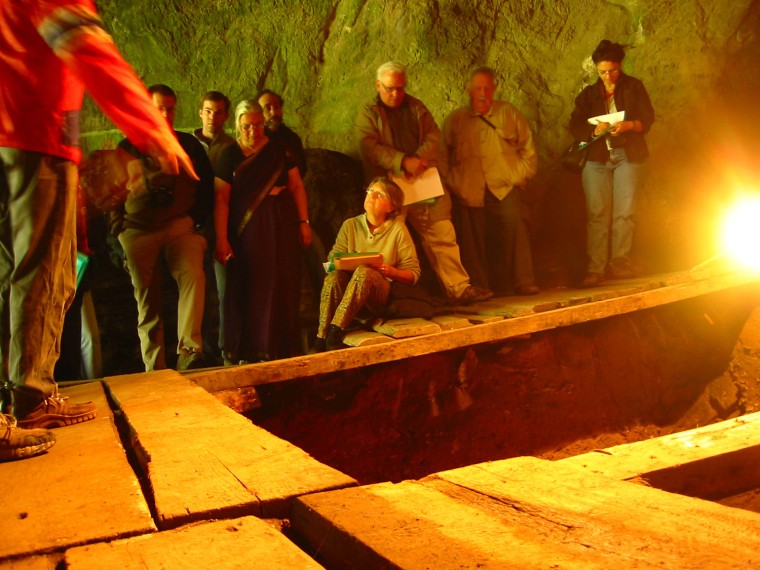Ancient hominids were a frisky bunch that freely interbred with genetically distant human-ish relatives, as well as with closely related members of their own groups, according to new research.
A close read of the genomes of our ancient cousins the Neanderthals and a more distantly related hominid group, the Denisovans, throws up incriminatory evidence that the two "archaic" lines mated with each other, and with humans, much more than scientists had previously understood, Nature News reports. They've also found evidence that a third mystery ancestor interbred with the Denisovan group at some point in their history.
No one knows what the Denisovans looked like, and only a few fossils including a stub of a young girl's pinkie bone have been found at a single cave in the Altai region in Russia. From this ancient genome researchers say they've found genetic evidence of an even older human ancestor, from Asia, that has not been documented.
David Reich, of Harvard Medical School, presented the early results of the new findings this week at a conference hosted by the Royal Society in London.
At a different meeting in Cold Spring Harbor Labs in New York this year, Svante Pääbo, a member of the research team and a professor of genetics at the Max Planck Institute for Evolutionary Anthropology, said that they'd found a section of DNA in the Denisovan sample that came from an even older ancestor, "something unknown," that made up 4 percent of the group's genetic material, according to a news report published in May.
The group also analyzed a toe bone found in the same cave, and identified that it belonged to an inbred local group of Neanderthals, "about what would be expected from a mating of half siblings," they explain.
Reich, Pääbo and colleagues developed a method to sequence ancient DNA in spectacular detail, which they documented in a Science paper in August 2012. Results of the Denisovan sequencing are filling out a picture of a group of archaic humans that vanished from the planet leaving behind almost no trace.
Traces of Neanderthal DNA are still found in many of us today, making up 2.5 percent of the DNA of all modern humans not from Africa. In comparison, in the Denisovan sample, 17 percent of the genome was Neanderthal in origin.
Because the new results are yet to be published, Reich and Pääbo said they were unable to comment for this story.
Nidhi Subbaraman writes about science and technology. You can follow her on Facebook, Twitter and Google+.
